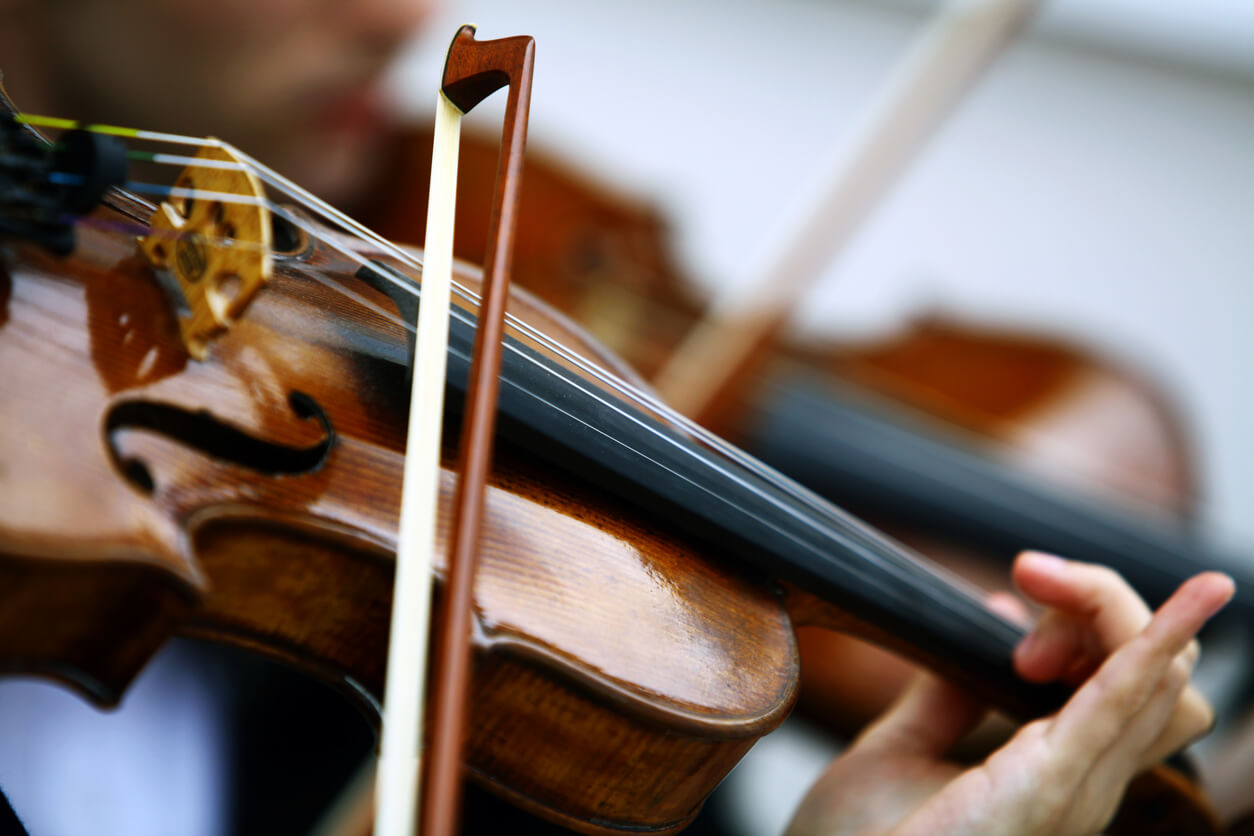
The Secret to Seamless String Transitions for Violinists
By: Peterson Piano Institute1. Relax and Control the Bow Arm
- Let the elbow move naturally: Avoid stiffness - allow the elbow to adjust fluidly with the bow’s direction.
- Maintain even bow pressure: Too much pressure creates harshness, while too little causes weak or broken tone.
- Move from the shoulder: Think of the whole arm working together rather than relying only on the wrist. This creates balance and stability when shifting strings.
2. Cultivate Left-Hand Independence
- Keep the fingers relaxed and close to the fingerboard: This minimizes unnecessary tension and ensures smoother transitions.
- Lift and place rather than dragging: Each finger should act independently. Dragging across strings often results in unclear tone.
3. Practice Slowly and Deliberately
- Start at a slow tempo to focus on precision and control.
- Use a metronome to build consistency and avoid rushing.
4. Listen, Record, and Adjust
- Record yourself: Listening back highlights subtle issues that are hard to notice while playing.
- Analyze tone quality: Pay attention to moments of crossing strings and refine pressure, bow angle, or speed accordingly.
5. Refine Bow Path and Angle
- Keep the bow angle consistent: Even small deviations can produce scratchy or uneven sound.
- Stay close to the strings: Avoid lifting the bow too far away, which can make transitions abrupt.
6. Strengthen Through Targeted Exercises
- Scales across multiple strings: Build awareness of crossing within a musical context.
- Dedicated string-crossing drills: Reinforce muscle memory and fluency.
- Etudes by Kreutzer or Sevcik: Provide advanced, systematic training in bow control and transitions.
7. Explore Dynamic and Rhythmic Variations
- Practice transitions with different note values (quarters, eighths, triplets, sixteenths) to improve flexibility.
- Add dynamic shaping (crescendo and decrescendo) while crossing strings to refine control over bow speed and weight.
8. Use Different Levels of Movement
- Shoulder for broader, slower crossings
- Elbow for medium-speed adjustments
- Wrist and fingers for rapid passagesThis layered approach allows you to adapt string transitions to the tempo and character of the music.
9. Stay Relaxed and Patient
- Take breaks when you feel tension building - fatigue can lead to bad habits.
- Celebrate progress, even small improvements, to stay motivated.
Key Takeaways
Smooth string transitions come from a combination of physical relaxation, precise bowing mechanics, mindful left-hand technique, and consistent practice. By approaching this skill with patience and musical awareness, violinists can transform technical challenges into expressive opportunities.
BLOG
Music articles to help you understand the process of learning to play an instrument more!
VISIT OUR BLOGJoin PETERSON’S most distinguished music academy for everyone
Exclusive music instruction form the children at the age of four
REGISTER NOW